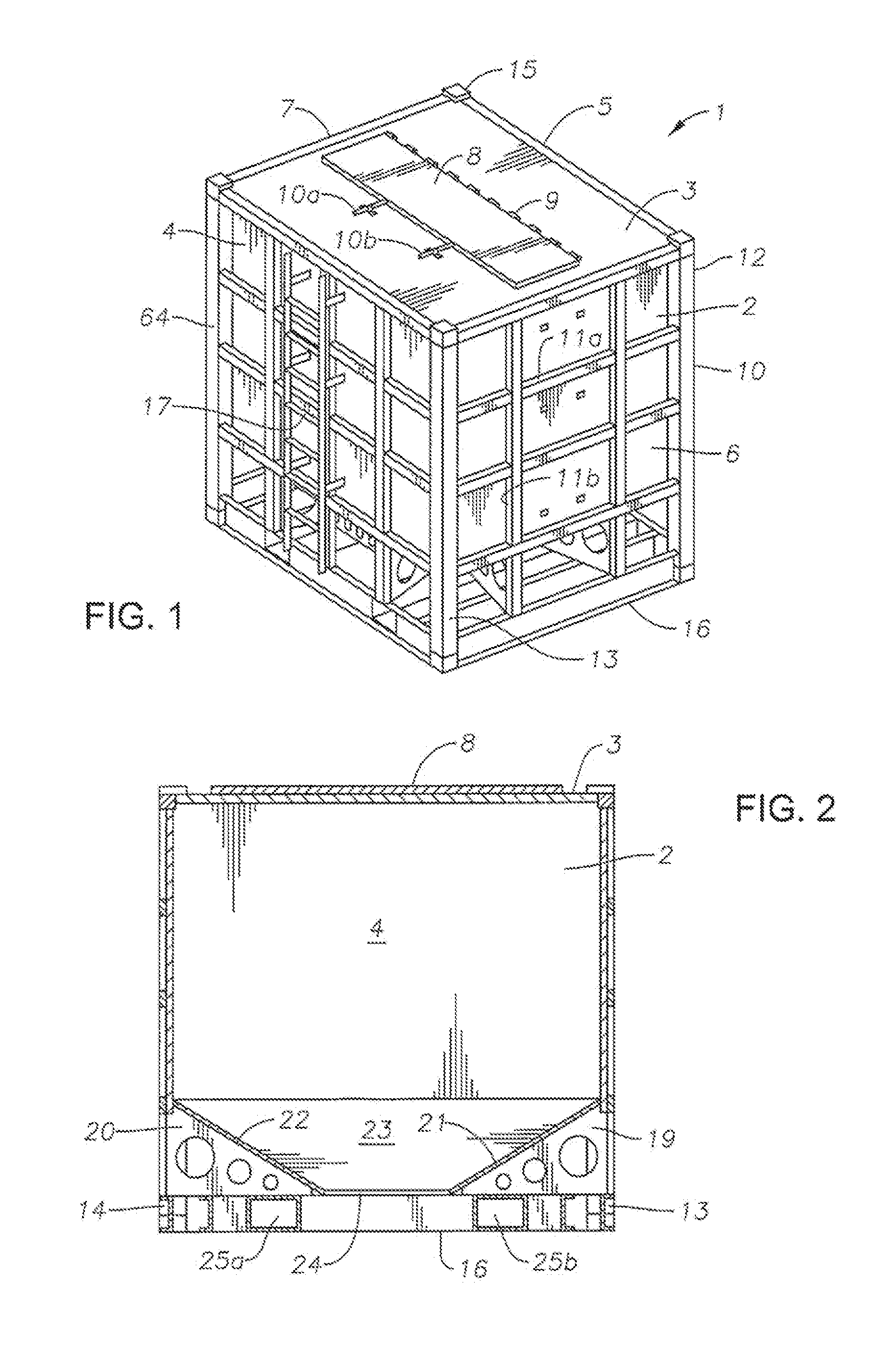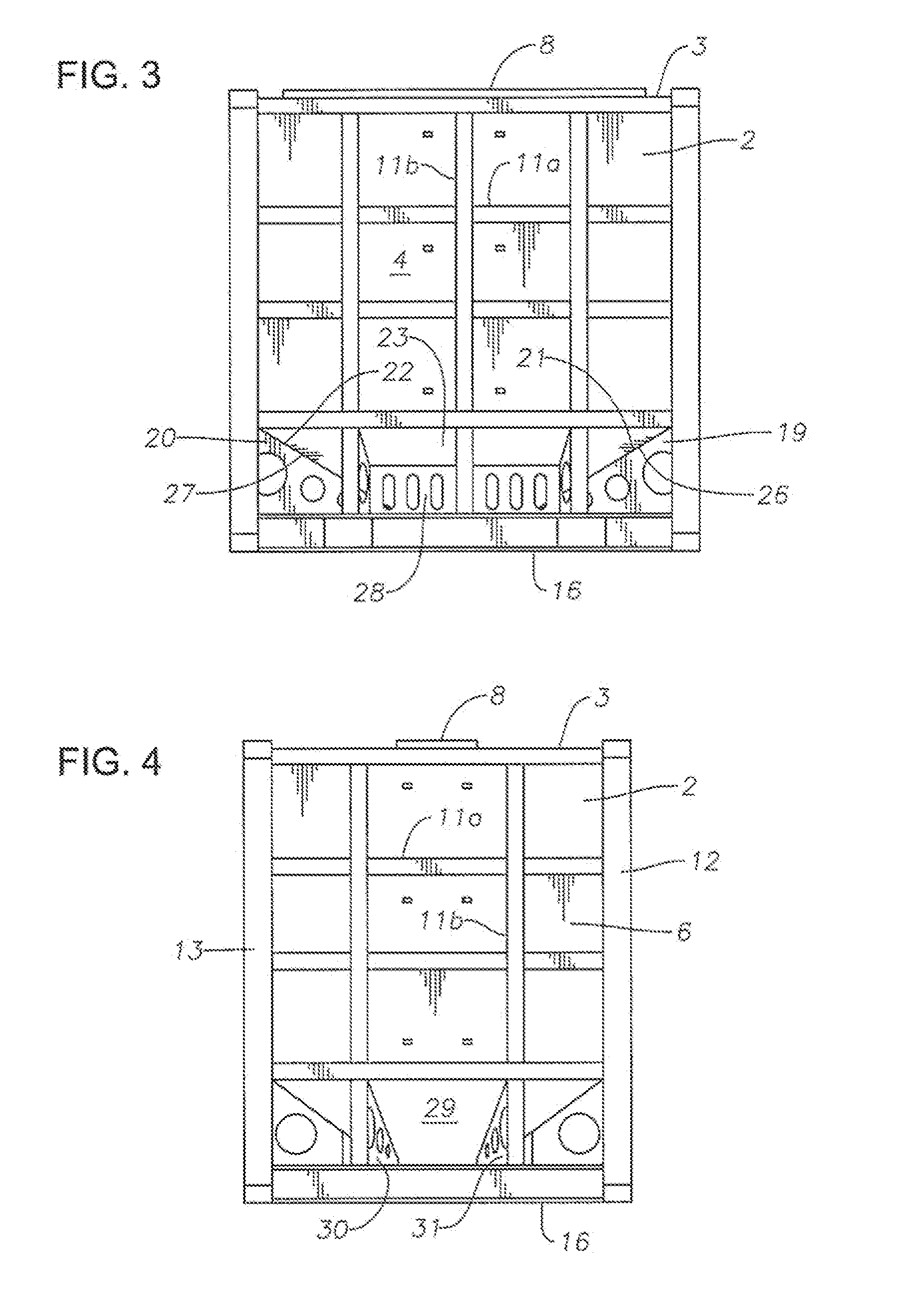Apparatus for the transport and storage of proppant
a proppant and apparatus technology, applied in the oil and gas industry, can solve the problems of difficulty in effective transportation of proppant at the fracturing site, difficulty in effectively transporting, and exposure of proppant to adverse weather conditions, and achieve the effect of improving the transportation and storage of proppan
- Summary
- Abstract
- Description
- Claims
- Application Information
AI Technical Summary
Benefits of technology
Problems solved by technology
Method used
Image
Examples
example 1
[0082]Experiments were conducted with a container in which the side plates had an angle of 30° and the end plates had an angle of 37°. The container had a tare weight of 5,560 pounds. The container was filled with proppant such that the gross weight of the container and the proppant was 43,460 pounds. As such, the total capacity of such container was 37,900 pounds. If the sand was “hand-packed”, then the total capacity of sand is 43,900 pounds. The container had an internal cubic capacity of 512 cubic feet.
[0083]During experiments, it was found that this orientation of side plates and end plates effectively discharged approximately all of the proppant from the container. Generally, however, the container was capable of transporting only 37,900 pounds of sand. As such, the capacity of the container was substantially less than optimal. Because the maximum amount of proppant is desired for every container, it was found that this configuration and orientation of side plates and end plat...
example 2
[0084]The container was modified so that the side plates extended at a 20° angle to horizontal and the end plates extended at 25° angle of the horizontal. The total weight of such container was 5,420 pounds. The internal cubic capacity of such container was 554 cubic feet. As such, only an insufficient amount of proppant could be received in such a container. During experiments with such a configuration, it was found that 4,120 pounds of proppant remained within the container. As such, this orientation of side plates and end plates was found to be ineffective in discharging all of the contents from the container. As a result, less than desired amount of proppant was available for use.
example 3
[0085]Another test was carried out on a container in which the side plates were oriented at a 20° angle with respect to horizontal and the end plates were at a 25° angle with respect to horizontal. The total weight of the container was 5,380 pounds. The gross weight of the container and the sand therein was 46,900 pounds. The container had the capacity of 41,520 pounds. The internal cubic capacity of such a container was 554 feet. It was found that this orientation of such side plates and end plates resulted in less than necessary amount of proppant being contained.
PUM
 Login to View More
Login to View More Abstract
Description
Claims
Application Information
 Login to View More
Login to View More - R&D
- Intellectual Property
- Life Sciences
- Materials
- Tech Scout
- Unparalleled Data Quality
- Higher Quality Content
- 60% Fewer Hallucinations
Browse by: Latest US Patents, China's latest patents, Technical Efficacy Thesaurus, Application Domain, Technology Topic, Popular Technical Reports.
© 2025 PatSnap. All rights reserved.Legal|Privacy policy|Modern Slavery Act Transparency Statement|Sitemap|About US| Contact US: help@patsnap.com



